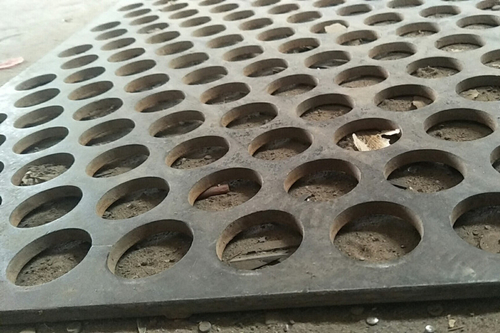The Relationship Between the Open Area Ratio of Perforated Plates and Screening Efficiency
Source:www.cn-psp.cnAuthor:河北森驰公司 Last updated:2025-04-11 10:30:37 Browse:
When perforated plates are used as screening devices, the open area ratio is closely related to screening efficiency. The choice of hole diameter and hole spacing directly impacts screening efficiency and performance. The relationship between these factors is reflected in the following aspects:
Hole Diameter and Screening Particle Size
The larger the hole diameter of the perforated plate, the larger the material that can pass through, but the screening uniformity may be poorer. On the other hand, smaller hole diameters can filter finer materials with better uniformity, making them more suitable for precise screening. Therefore, the choice of hole diameter should be based on the size and precision requirements of the material being screened.
Hole Spacing and Screening Efficiency
Smaller hole spacing generally leads to higher screening efficiency, as materials can pass through more closely spaced holes more quickly. However, too small a hole spacing may compromise the structural strength of the perforated plate, reducing its overall rigidity and service life. Thus, when selecting hole spacing, it is important to consider not only screening efficiency but also its impact on the strength and durability of the perforated plate.
Material and Service Life
To improve the service life of the perforated plate, selecting more wear-resistant materials is crucial. For example, using high-wear-resistant materials such as manganese steel or stainless steel can enhance the wear resistance of the perforated plate, extend its service life, and reduce the frequency of replacements due to wear. The right material choice not only improves screening efficiency but also ensures the long-term stability of the equipment.
Comprehensive Consideration of Screening Needs
Depending on the actual screening requirements, it is essential to choose the right hole diameter, hole spacing, and material to ensure optimal screening performance while extending the service life of the perforated plate. Efficient screening and long-term durability typically require a balance between open area ratio and material selection. Therefore, when designing perforated plates, it is important to consider both the open area ratio and the overall structure and operating environment, ensuring the stability and cost-effectiveness of the screening system.
By comprehensively considering these factors, we can optimize the design of metal perforated plates, enhance screening efficiency, and extend their service life.
